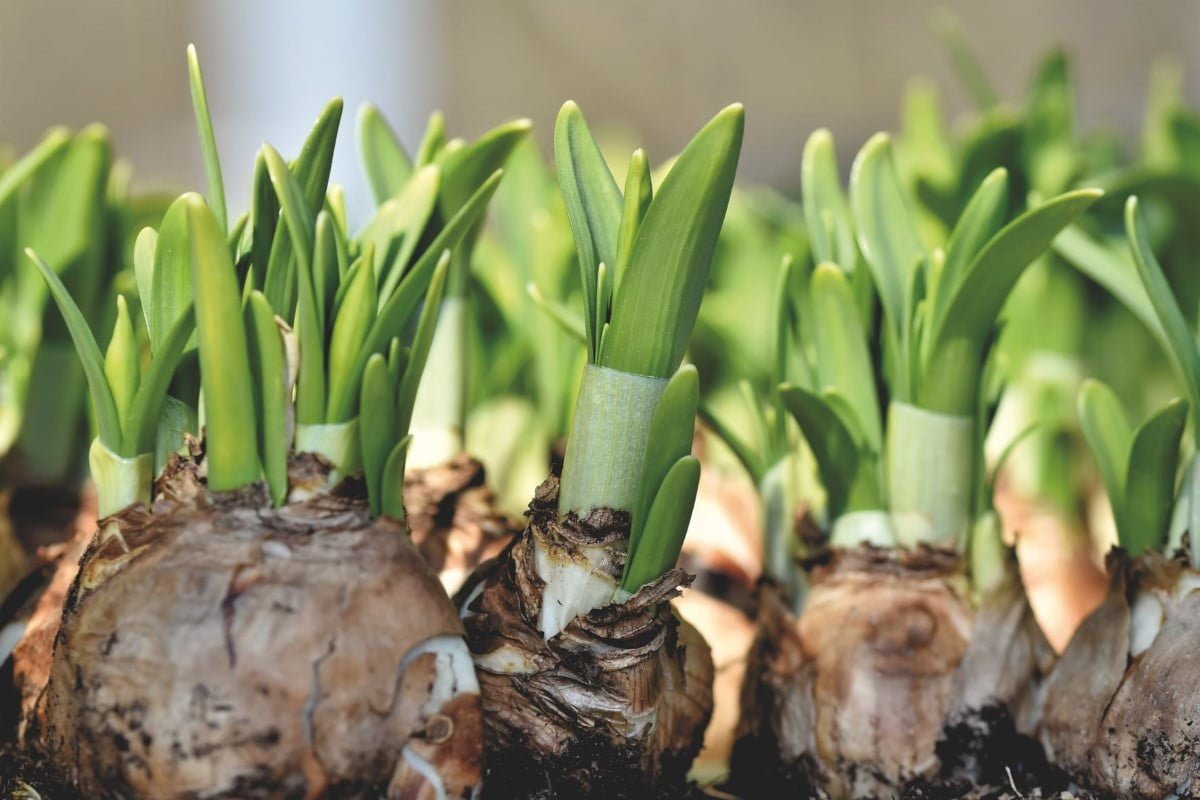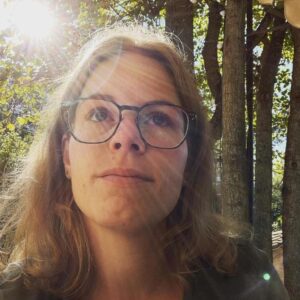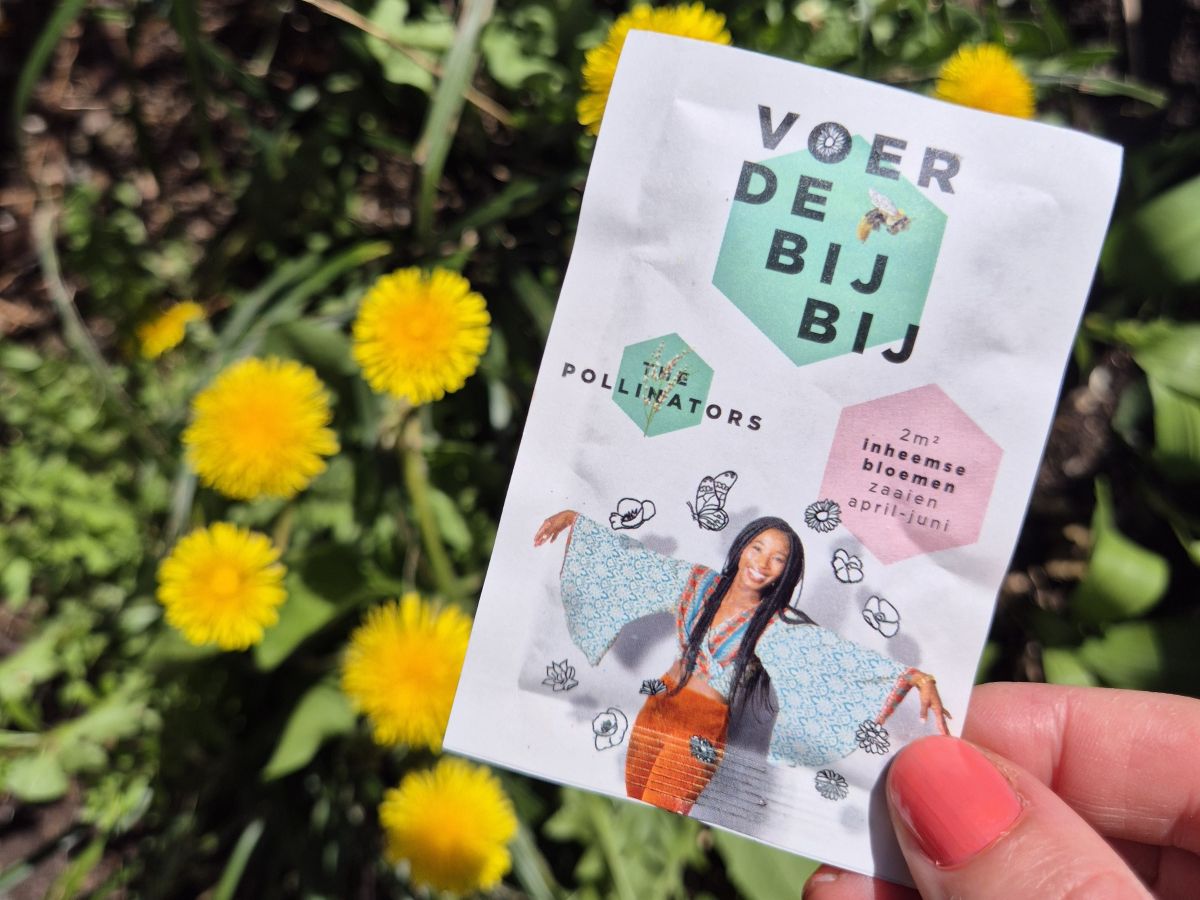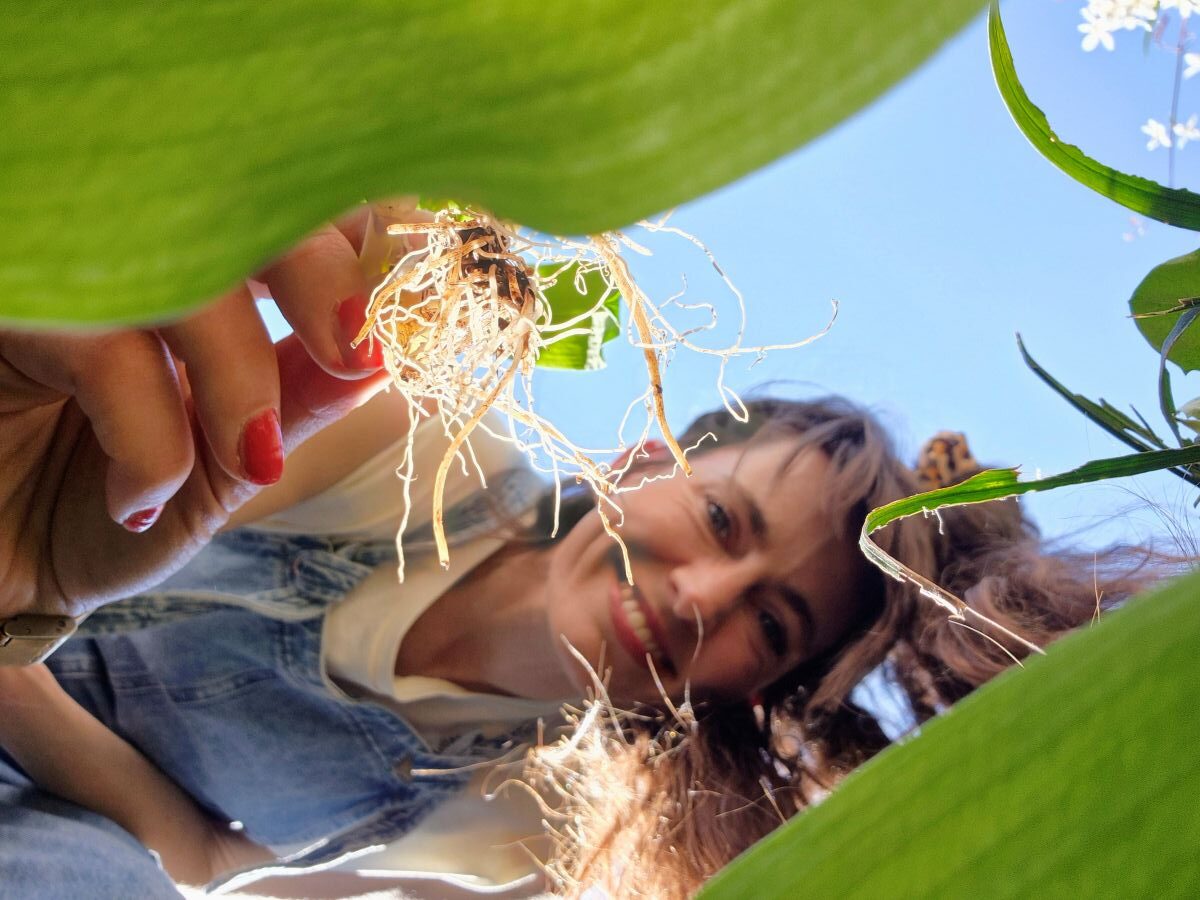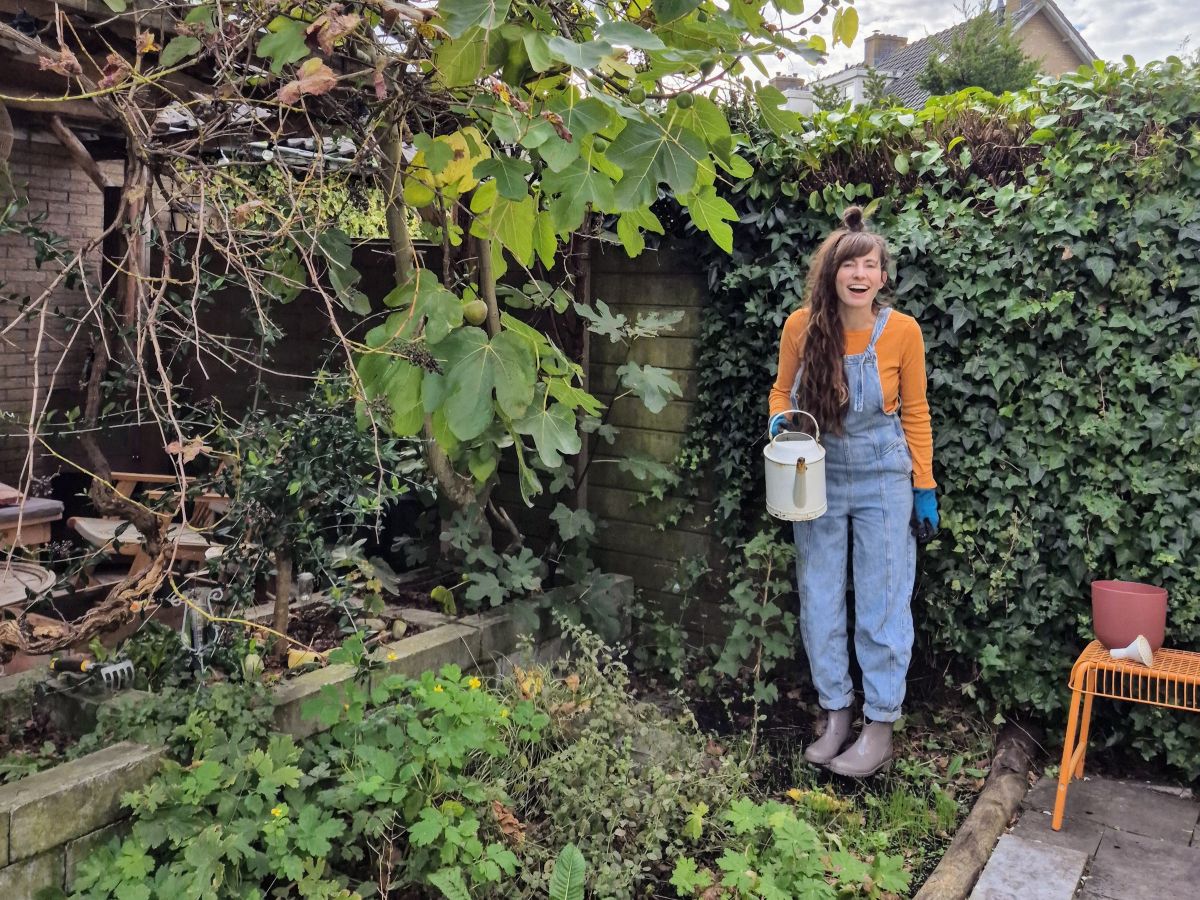Want a blooming garden in spring? Then autumn is the time to plant flower bulbs. But did you know that conventional bulb cultivation is heartily polluting? Only 1% of flower bulb cultivation is organic! Fortunately, more and more growers are making the switch to sustainable methods of cultivation and thus organic flower bulbs. These organic flower bulbs may be a little bit more expensive, but you do ensure happy flowers, bees and thus a healthy nature.
What is an organic flower bulb anyway?
Let's start at the beginning: what is a flower bulb? A flower bulb is a bulbous, underground part of a plant. That bulb is where all the nutrition is stored. At the heart of the bulb is the germ that later hatches and becomes the flower. Around the germ is a fleshy white substance called ‘skirts’. In a flower bulb, it is these skirts where all the food is stored to make the bulb grow and flower.
There are different types of organic flower bulbs
You may never have given it much thought, but one flower bulb is not like another. They can be divided into:
- Annual bulbs: these are at their most beautiful in the first year. They often return the following year, but less profusely. After a while, the flowering is over and the flower no longer appears. Examples of this type of flower bulb are crocuses, tulips and blue grapes.
- Perennial flower bulbs: the name gives it away, these are flower bulbs that bloom very nicely for several years. You can actually compare them to perennials, as they come back every year. This applies to the wood hyacinth, the tube hyacinth and oriental anemones.
- Naturalising or stationary flower bulbs: the third group of flower bulbs expands itself, so you get more and more of them. They are also perennial, so they come back every year. Examples of this group are snowdrops, springdrops, star hyacinths and daffodils.



Organic flower bulbs.
Why choose organic flower bulbs?
We now know what types of flower bulbs there are. But when are they organic? And why is that even important? Conventional bulb-growing is one of the most polluting branches of agriculture, putting insect and biodiversity conservation at risk. The pesticides used pollute the air, soil and (drinking) water. As a result, they are harmful to humans, animals and the environment. In the Netherlands, flower bulbs are grown on some 27 thousand hectares of land. From government research (RIVM) into pesticides around bulb fields, it appears that pesticide residues can be found in abundance in the homes of local residents.
Purchase of organic flower bulbs
Fortunately, more and more growers are making the switch to organic cultivation. Among other things, they use natural manure and no pesticides. Organic flower bulbs are free of chemicals, allowing insects to use them as food without any problems.
Because organic flower bulb cultivation is less intensive, the harvest is smaller. Besides flower bulbs, the same fields also grow green manure crops and have flowering field edges. Less space for harvesting, but a nice living environment for all kinds of insects. All this makes organic flower bulbs slightly more expensive. But you do help keep nature healthy! Organic flower bulbs are for instance available at Ecobulbs, Natural Bulbs, Huiberts and Strong bulbs.
Buy your organic bulbs in the right season
Always buy bulbs, tubers and rhizomes in the right season. Species that should be planted in autumn, buy in autumn. They will then flower in spring. Summer-flowering bulbs, such as dahlias, lilies and gladioli, should be bought and planted in late spring. If you have bought flower bulbs but don't have time to plant them right away, store them well! Open the bags to allow enough air to reach the bulbs and put them in a dark, dry and cool place (15°C).
There are also flower bulbs that occur naturally in our region. These are called native flower bulbs. These are often naturalising bulbs. Examples include wild daffodil, autumn thistle, wood tulip, wood anemone, ramson (edible leaves) and arum. Want to know why it is important to have native species in your garden? We have written an extensive article on this. The funny thing is that the tulip, for which the Netherlands is so famous, is not from the Netherlands but was brought by travellers in the 16th century.
Extend bloom arch to help insects
Planting flower bulbs is quite a bit of work. Why would you want flower bulbs in your garden? In my garden designs, flower bulbs are an integral part of the planting. There are several reasons for this. Firstly, they allow you to extend the flowering period. This is because there are flower bulbs that flower very early, providing food for insects. This allows you to create months of flowering in your garden. My aim is to always have something flowering in the garden all year round. The insects that descend on the flowers are also food for birds and other animals. Another reason to plant flower bulbs in your garden is that they herald spring; the budding of the first bulbs adds colour and cheer to your garden and state of mind.
And now you probably want to know, how can I then extend the bloom arch with bulbs?
- January - February: snowdrops, winter aconite
- February - March: crocus, springdrop
- March - April: daffodil, star hyacinth
- April: hyacinth, blue grape
- April - May: lapwing egg, tulip, summer bellflower
- May: lily of the valley
- May - June: wood hyacinth
- May to July: ornamental onion
- August: dahlias
- Sept to Nov: autumn crocus, autumn daffodil, cyclamen



A handy visual of spring-flowering bulbs can be found here and beautiful colour combinations you will find here.
Planting tips and maintenance
There are two times when you can plant flower bulbs. This depends on whether you have spring-flowering or summer-flowering bulbs. Spring-flowering bulbs (tulips, daffodils, hyacinths, snowdrops) should be planted in autumn, from September to December, before the first night frost. Summer-flowering bulbs, such as dahlias, should be planted in spring, as soon as the chance of night frost has passed.
Planting of flower bulbs
- Flower bulbs grow and flourish in any soil, as long as the soil is well-watered. Otherwise, the bulbs will rot.
- Plant naturalising bulbs in an area where you don't do much gardening. This will give the bulbs room to multiply.
- Planting flower bulbs can be done with a shovel or bulb planter. If you are going to plant many, a bulb planter is more convenient. It makes a perfectly round hole and holds the soil you took out, so you can put it back in after planting.
- Plant the bulbs with the tip up and the convex side down.
- For the planting distance, keep three times the width of the bulb.
- And for planting, also keep three times the height of the bulb.
- Give some water after planting.
Caring for your biobulbs
- On tulips and daffodils, cut away the spent flowers after flowering so that energy does not go into making seed buds, but into making the bulb itself stronger.
- Leave the leaves and stem of the bulb to stand and die, this way all the nutrition goes back to the bulb so it can flower again next year.
- When the stems and leaves are completely dried out and yellowed, you can remove them.
Flower bulb lasagne with organic flower bulbs
Don't have a (large) garden, but want some extra greenery in your surroundings? You can also plant organic flower bulbs in a pot to brighten up your patio or balcony. When you plant flower bulbs in a pot, we call it a flower bulb lasagne. This means that you plant flower bulbs with different flowering times, in several layers on top of each other. This way, you can enjoy budding bulbs for months. On top you can place evergreen plants such as the purplebell, winter heather or pansies. Just make sure the pot is deep enough, and that there is a hole at the bottom. This will allow excess water to drain away. The pot should be at least three times the height of the bulb. Are your green fingers starting to itch yet?
More sustainable tips from thegreenlist.nl
- Also see: sustainable gardening: thought about peat-free potting soil yet?
- Also see: This is how you help birds through the winter.
- Also see: tips for getting your garden ready for winter (also for garden animals).
Sources: RIVM, allaboutflowerbulbs.nl, growth.nl, gardenersworldmagazine.nl. Photo credits: Lisa Fotios (Pexels)

